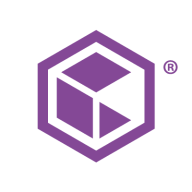

Commvault Cloud and Microsoft DPM compete in data management, backup, and recovery. Commvault Cloud appears to have the upper hand with broader cloud integration and application support, while Microsoft DPM is more suited to Microsoft ecosystems.
Features: Commvault Cloud offers comprehensive data management across hybrid and multi-cloud environments, effective disaster recovery, and security features. It integrates seamlessly with public cloud services and supports a wide range of application-specific agents. Microsoft DPM excels in its integration with Microsoft's ecosystem, providing live migrations of VMs and great recovery features for Microsoft workloads.
Room for Improvement: Commvault Cloud's interface could be more intuitive, and its documentation needs enhancement. Simplifying functionalities and setup can reduce dependencies on technical know-how. Microsoft DPM needs broader support for non-Microsoft platforms and simpler recovery processes to expand usability and effectiveness.
Ease of Deployment and Customer Service: Commvault Cloud is flexible in supporting various environments with robust customer service and technical expertise. Its deployment process is smooth, supported by engaging account teams. Microsoft DPM, integrated within Microsoft ecosystems, encounters challenges with mixed environments and needs broader support, affecting its deployment ease and customer service experiences.
Pricing and ROI: Commvault Cloud has higher upfront costs but promises substantial ROI in larger environments, with advanced features reducing operational costs over time. It offers versatile licensing models for different budgets. Microsoft DPM provides simpler, more contained pricing, appealing to Microsoft-integrated environments; it remains more economical for straightforward use cases.
The number of people who know Commvault Cloud is lesser compared to Veeam.
Customer support has very closed departments, requiring us to shuffle between them to get one thing done because representatives have limited accessibility.
They provide professional services that are quite good and can meet your needs.
I have not faced any downtimes with Commvault Cloud.
Commvault Cloud is highly stable, and I would rate it a ten out of ten.
The product is very stable, rating between eight and nine out of ten.
I feel that the support is not yet up to the mark, with not enough professional engineers to provide assistance.
The backup should have compression, deduplication, and DR replication.
Microsoft DPM could improve by adding S3 backup to S3 storage capabilities.
Commvault Cloud is expensive, and there is room for the price to be 10-15 percent lower than what they are charging currently.
The pricing of Microsoft solutions rates in the middle range at five out of ten.
Microsoft licensing is complex, especially for enterprise or data center solutions.
We can back up unlimited TBs due to our per node license.
Other features include endpoint solutions, integration with Office 365, ransomware protection, archival for long-term retention, and no ingress or egress charges.
The two-layer backup system is a particularly valuable feature in Microsoft DPM.
Microsoft DPM impacted my organization positively, and that was definitely possible.
One of the most effective features of Microsoft DPM is its integration with the entire Microsoft ecosystem.
| Product | Market Share (%) |
|---|---|
| Commvault Cloud | 6.0% |
| Microsoft DPM | 0.9% |
| Other | 93.1% |


| Company Size | Count |
|---|---|
| Small Business | 57 |
| Midsize Enterprise | 24 |
| Large Enterprise | 81 |
| Company Size | Count |
|---|---|
| Small Business | 9 |
| Midsize Enterprise | 7 |
| Large Enterprise | 7 |
Commvault Cloud is the ultimate cyber resilience platform built to meet the demands of the hybrid
enterprise. Beyond its core functionality of data backup and recovery across diverse workloads, including applications, databases, virtual machines, and files, Commvault Cloud stands out as a robust defense against ransomware. Going beyond backup, the platform integrates advanced data security features such as encryption, access control, and threat detection, safeguarding against unauthorized access and cyber threats.
With tools for data management, classification, and migration, businesses can optimize storage costs, enhance accessibility, and comply with regulations seamlessly. Boasting cloud integration with major providers like AWS, Azure, and Google Cloud, Commvault Cloud leverages the scalability and flexibility of the cloud for comprehensive data protection and management. The platform's automation capabilities streamline tasks, and its reporting and analytics features provide valuable insights into data usage, potential risks, and optimization strategies. Commvault Cloud is not just a security tool; it is a key component of cyber resilience, enabling organizations to not only protect against cyberattacks but also recover swiftly and minimize the impact of incidents. Elevate your cyber resilience strategy with Commvault Cloud.
Microsoft Data Protection Manager (DPM) is an enterprise backup system that can be used to back up data from a source location to a target secondary location. Microsoft DPM allows you to back up application data from Microsoft servers and workloads, and file data from servers and client computers. You can create full backups, incremental backups, differential backups, and bare-metal backups to completely restore a system. Microsoft DPM can store backup data to disks for short-term storage, to Azure Cloud for both for short-term and long-term storage off-premises, and to tapes for long-term storage, which can then be stored offsite. Backed up files are indexed, which allows you to easily search your recovered data.
Microsoft DPM contributes to your business continuity and disaster recovery strategy by facilitating the backup and recovery of enterprise data, ensuring resources are available and recoverable during planned and unplanned outages. When outages occur and source data is unavailable, you can use DPM to easily restore data to the original source or to an alternate location.
Key Features of Microsoft DPM:
Reviews from Real Users
Microsoft DPM stands out among its competitors for a number of reasons. Two major ones are its robust and flexible backup capabilities and its being easy to manage with one central dashboard.
William M., the head of ICT infrastructure & security at a tech services company, notes, "The automated procedure is quite good for us, as it is able to capture all of the information that we require. The compatibility is very good. We have an IBM AS/400 machine in our office that we're using, and we're able to back it up fine. This is the same for other systems, as well. I think that overall, it is really adaptable, compatible, and scalable."
Mohammed I., a managing director at Adalites, notes, "I would definitely recommend data protection DPM. It has an application backup, a file backup, a system backup and a hypervisor. It works flawlessly, never a problem."
Rodney C. a system analyst at a financial services firm, writes, "The most valuable feature is that DPM has an index so individual files can be searched. This is our primary tool for recovering deleted files or folders. Once we implement a System Center Operations Manager, all of our DPM servers can then be seen on one dashboard."
We monitor all Backup and Recovery reviews to prevent fraudulent reviews and keep review quality high. We do not post reviews by company employees or direct competitors. We validate each review for authenticity via cross-reference with LinkedIn, and personal follow-up with the reviewer when necessary.